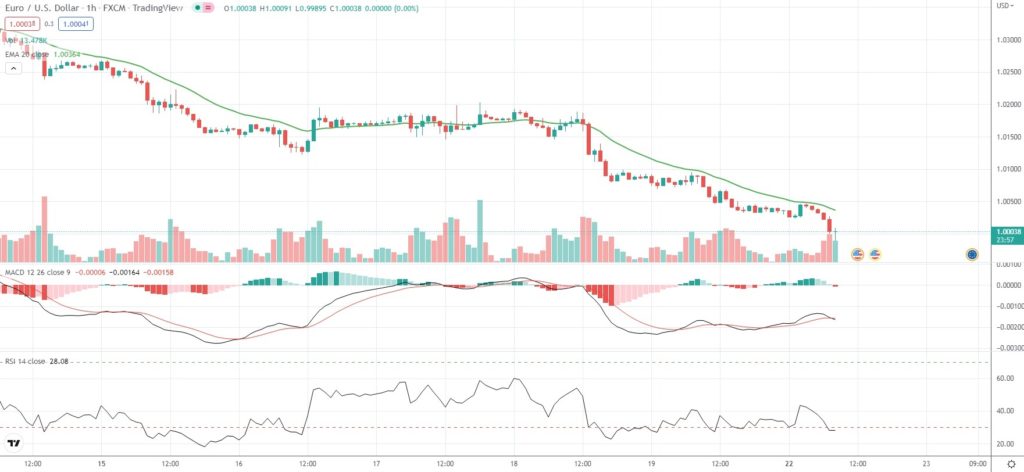EUR/USD plummeted to a fresh more than five-week trough on Monday, after Russia said European gas supplies via the Nord Stream 1 pipeline would be halted for three days at the end of August, which mounted more pressure on the region as it looks to refuel ahead of the winter period.
Bundesbank President Joachim Nagel told Rheinischen Post newspaper that Germany’s economy would likely go into recession over the winter in case the energy crisis continued deepening.
Even if a recession is increasingly possible, the European Central Bank must continue tightening monetary policy to curb rising inflation, according to Nagel.
Meanwhile, the US Dollar remained elevated against major peers, as several Federal Reserve officials indicated aggressive monetary tightening should continue.
“Fed speakers have been stressing the message that more rate hikes are coming given the fight against inflation has not yet been won,” Rodrigo Catril, senior Forex strategist at National Australia Bank, wrote in an investor note.
Fed Chair Jerome Powell is also expected to point out that tightening is “still a long way from the end,” Catril noted.
Markets are now pricing a 46.5% chance of another super-sized 75 basis point rate hike from the Fed in September, while 10-year US Treasury yields climbed above 3% earlier on Monday for the first time since July 21st.
As of 8:35 GMT on Monday EUR/USD was edging down 0.35% to trade at 1.0004. Earlier in the European trading session, the major Forex pair slipped as low as 0.9989, which has been its weakest level since July 14th (0.9952).
EUR/USD has retreated 2.16% so far in August, following another 2.46% loss in July.
Daily Pivot Levels (traditional method of calculation)
Central Pivot – 1.0055
R1 – 1.0079
R2 – 1.0119
R3 – 1.0142
R4 – 1.0166
S1 – 1.0015
S2 – 0.9992
S3 – 0.9952
S4 – 0.9912






